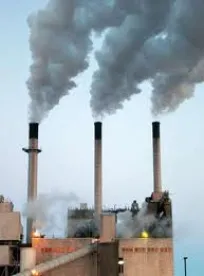The Environmental Protection Agency (EPA) issued a new guidance memorandum on Thursday, January 25, 2018 that addresses the question of when – and whether – a major source of hazardous air pollutants (HAPs, such as lead, mercury, and benzene) can be reclassified as an “area source” under Section 112 of the Clean Air Act, and thereafter avoid major source permitting requirements. The new guidance allows major sources to become area sources at any time, by agreeing to federally enforceable limits on their potential to emit HAPs. This replaces the EPA’s previous “once in, always in” policy, whereby any major source of HAPs remained a major source regardless of later reductions in its potential to emit HAPs.
The “once in, always in” policy has long been seen as a stumbling block for innovation in the manufacturing sector. The policy – which was first set in a 1995 guidance memorandum, not a regulation – essentially prohibited sources from escaping regulation as major sources of HAPs even if they reduced or eliminated HAP emissions altogether. This policy was a disincentive for innovation and investment in new manufacturing processes or emission control technologies, since sources could not escape their regulatory burdens even if less stringent regulation of their emissions were justified. However, environmental groups have opposed revision to the policy, due to concerns that it could allow increased HAP emissions.
The new policy potentially affects a wide variety of industry sectors – from petroleum refineries and steel mills to pharmaceutical and semiconductor manufacturers. Since 1990, the EPA has issued regulations setting HAP emission limits on approximately 175 categories of industrial emissions.
Major sources – those with potential to emit 10 tons per year of any one HAP, or 25 tons per year of any combination of HAPs – must use the “maximum achievable control technology,” or MACT, which is set by reference to the best-performing sources in each source category identified by EPA. The EPA Administrator can allow area sources to use a less-stringent “generally available control technology,” or GACT, but they are still subject to an emissions limitation. Moreover, as HAP standards are required by statute to be evaluated (and, if appropriate, updated) every eight years, technological changes that were “best” when the standard was first set may become the norm at a later date. This process addresses the potential for backsliding.
Under a previous guidance memorandum issued in 1995, the EPA set the “first compliance date,” i.e., the first time a MACT standard became applicable to a source, as the deadline for a potential major source to reduce emissions below the threshold. The EPA also established a “once in, always in” policy, requiring any source that was a major source on the first compliance date to permanently comply with MACT standards.
At the time, the EPA framed the “once in, always in” policy as a means to avoid backsliding and ensure that the greatest possible reductions in emissions of HAPs remained in place as MACT theoretically became more stringent over time. However, sources have suggested that the policy disincentivizes efforts to reduce emissions below the major source threshold, as they will remain subject to the more stringent MACT requirements even if they bring their emissions down.
The 2018 guidance repeals the 1995 “once in, always in” memorandum, and instead establishes a policy that a major source can, at any time, agree to enforceable limits that bring its potential to emit HAPs below the major source threshold; once it does so, it becomes an area source and is no longer subject to MACT requirements. The EPA argues that the new guidance will provide additional incentive for sources to reduce emissions in order to drop below the major source threshold, reducing the regulatory burden on sources and states alike, and anticipates that it will request comment on revising its regulations to codify its updated interpretation of Section 112.


 />i
/>i

